Mystery History: Do you recognize this vintage Corvette racer?
Larry Carpenter has a long history with Chevrolet Corvettes, stretching back more than 40 years. The backstory of one of his more recent purchases, however, is still clouded in mystery. This ’56 was a former drag racer and certainly must have had a colorful past, but Carpenter, of Ogden, Utah, hasn’t had much luck digging into its quarter-mile exploits. Perhaps you or someone you know remembers seeing this straight-axle Corvette competing in Modified Sports Car classes in the ’60s and can help shed some light on details. Here’s a look:
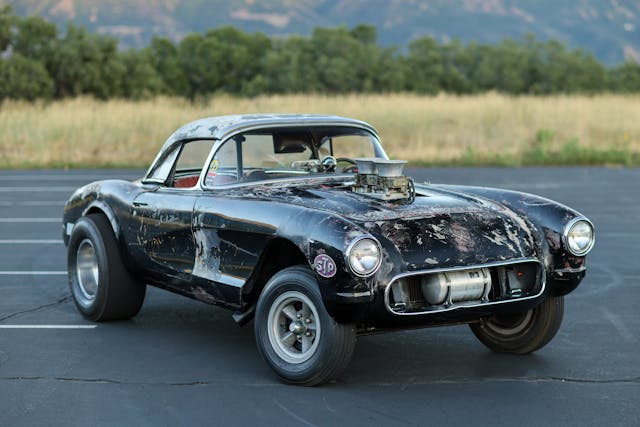
Carpenter’s love of Corvettes goes back to his teens. “My dad was a Ford man,” said Carpenter, who let brand loyalty skip a generation. “In high school, I decided I wanted a Corvette.” His father thought that Corvettes were hard to work on. We suppose anyone who’s tried to service a big-block Corvette would have a tough time arguing. Despite his father’s protests, Carpenter bought his first Corvette just before his senior year in high school. It was a 1964 convertible with a 365-horsepower L76 327.
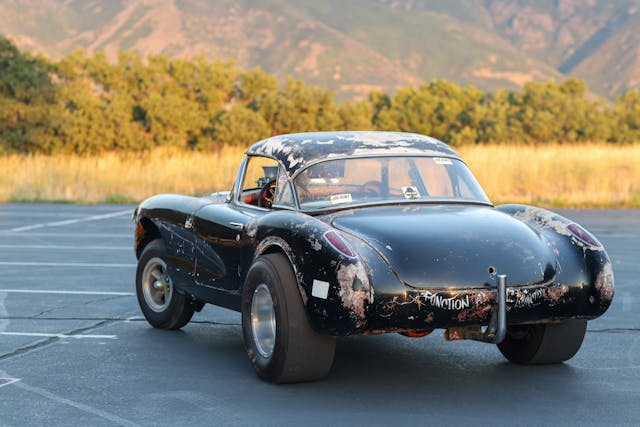
“I’ve probably had about 35 different Corvettes.” Carpenter admitted. His collection was never too large though, because his desire for a different Corvette would necessitate selling one to free up the room and the money to grab another. Today though, he’s less interested in selling any of his current fleet to acquire a new one. Over the past 40 years or so, Carpenter’s collection has included mostly second-and third-generation Corvettes. If there’s one theme tying them all together, it’s that none have remained stock. On the contrary, Carpenter seems to have a habit of buying banged-up race cars or basket cases and giving them a new life, with little reverence for concours-type restorations. “I’m not a purist,” Carpenter stated, completely at peace with the fact that his cars would be shunned by the National Corvette Restorers Society. “To me, NCRS means ‘No Components Remain Stock’.”
Indeed, his idea of a “100-point” car is one that has 100 aftermarket parts. We’re not casting aspersions on Carpenter’s taste, far from it: We’re fans of race-prepped ‘Vett`es and the godfather of Corvettes himself, Zora Arkus-Duntov, was a big proponent of giving Corvette buyers the parts needed to make them competitors on the track. Even if Carpenter’s Corvettes don’t remain stock, there is a theme, and it’s often a period-correct look from the late ‘60s to early ‘70s.
The car that’s spent the most time in Carpenter’s fleet is a ’66 coupe he’s owned since about 2014. It was a big-block drag racer that Carpenter swapped to a small-block and then back to a big-block. “It’s really a hot rod,” Carpenter explained, and it’s now equipped as a road racer, complete with Hooker side pipes. He also owns a 1972 Stingray that wears side pipes along with Torque Thrust wheels and an L88 hood.
Carpenter’s wife, Sandie, drives the 1960 Corvette that you see here. That was the first C1 Corvette in their stable. That car was purchased in the summer of 2016 as a running and driving car, but it was in the process of being stripped for paint. The fiberglass was in excellent shape, so it didn’t require any special work. The body was taken off the frame, the car was painted, and everything else was freshened up, including the engine. It had been equipped with a rather plain 350, but in keeping with Carpenter’s “day two”, or in this case, “year 10” aesthetic, the engine was treated to forged pistons, a more potent top end, and LT-1 livery, although it does use the famous Duntov 30-30 cam which offers a bit more high-rpm performance than the stock LT-1 bumpstick.
Carpenter purchased this 1956 Corvette in July 2017 from a buyer who picked it up from the previous owner’s estate. As best as Carpenter can tell, the car was based in the San Francisco Bay area and raced in its solid-axle configuration into the mid-1980s, at which point the car was driven off the end of a dragstrip. “That doesn’t surprise me. . . It didn’t have any front brakes.” Carpenter explained. According to the seller, the car hit a hay bale, although Carpenter attests that whatever it hit was far more stout than that, considering the damage to the body and the chassis.
The story goes that the damaged car was dragged back home, the engine and trans were removed, and it was parked next to a chicken coop. That part of the story tracks, as Carpenter noted that there was a definite lack of spider or spider webs when poking about the car’s interior and undercarriage during its rebuild. Score one for organic pest control.
When he bought it, the car featured hand-painted lettering on the side that read “Profile in Black” with the owners “Owen and Hankins” also mentioned. Carpenter did discover that there appears to have been a change in the partnership or perhaps a falling out as the Owens was mostly sanded off and the “and” was painted over. Despite spending years trying to track down the car’s history and posting on various vintage car and hot rod message boards, Carpenter hasn’t had any luck tracking down the family of the previous owners.
In the meantime, Carpenter decided to make it his car and got rid of most of the lettering, although he did leave plenty of the car’s patina. The track accident left the passenger side front fender hanging on by a thread, or rather several fiberglass threads. He repaired the damage as delicately as possible, keeping the “STP” sticker intact. “It was more work than if you’d done it the normal way, but it hides the damage well,” Carpenter said. Despite cleaning up the body and repairing the frame damage, plenty of the car’s original character is intact, from the cracked paint to the original lettering on the back. It’s tough to make out, but the hand-lettering reads “Function at the Junction” which Carpenter believes may reference a West Coast dragstrip.

With no engine or trans in the car, Carpenter chose a combination that he thought was appropriate. He found a used 327 with a worn-out block and salvaged its rotating assembly and fuelie heads. He also scored a seasoned 327 block and brought it to a machine shop, giving the machinist instructions to bore it to match his vintage .040-over pistons, but not to hot tank it, as he planned to run the engine without painting it to keep it looking vintage.
“I tried to keep this car as period correct as I could” — Larry Carpenter
The engine was outfitted with late-‘60s-appropriate speed parts, including the Edelbrock TR-1 “shoebox” tunnel ram and matching 660CFM Holley center-squirter carbs. Since the car still had a Joe Hunt decal, it seemed fitting to equip the 327 with a Joe Hunt magneto. Carpenter also found an appropriate exhaust, a used pair of Hooker fender-well headers meant for an early Nova. They were an almost perfect fit, and just as important, they look the part.
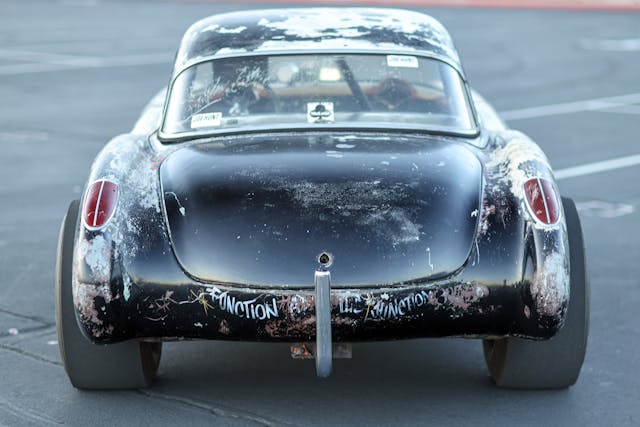
Because the car’s real racing days were over, Carpenter worked on making the car more streetable without losing its racy edge. “I had to rebuild the front end, the frame, and suspension. It was antiquated and sketchy. I don’t know how that guy dared to drive down the track,” said Carpenter. The straight axle, still of unknown origin, was rebuilt and it also got some much-needed front brakes, as Sandie’s 1960 Corvette donated its stock drums when it was upgraded to discs. The 327 is linked to an M-21 four-speed by way of an Ansen NHRA blowproof bellhousing with a Hurst shifter. It sends power to a Pontiac/Olds 9.3-inch rear axle fitted with a spool and 5.38:1 gears. Like we said, it still has plenty of race car manners.
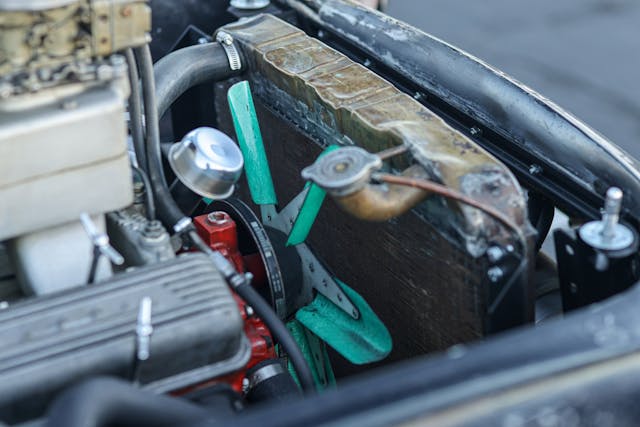
Carpenter has done quite a job in making this car look as a survivor race car should, despite having to make plenty of repairs. As much as we love its current look, both Carpenter and all of us here at Hagerty Media would love to see how it presented in its heyday. If you remember seeing this car on the dragstrip when it was a quarter-mile contender, please share your story and we’ll help you get in touch with Carpenter so that he can be a caretaker of not only the current car, but also its racing legacy.
***
Check out the Hagerty Media homepage so you don’t miss a single story, or better yet, bookmark it. To get our best stories delivered right to your inbox, subscribe to our newsletters.


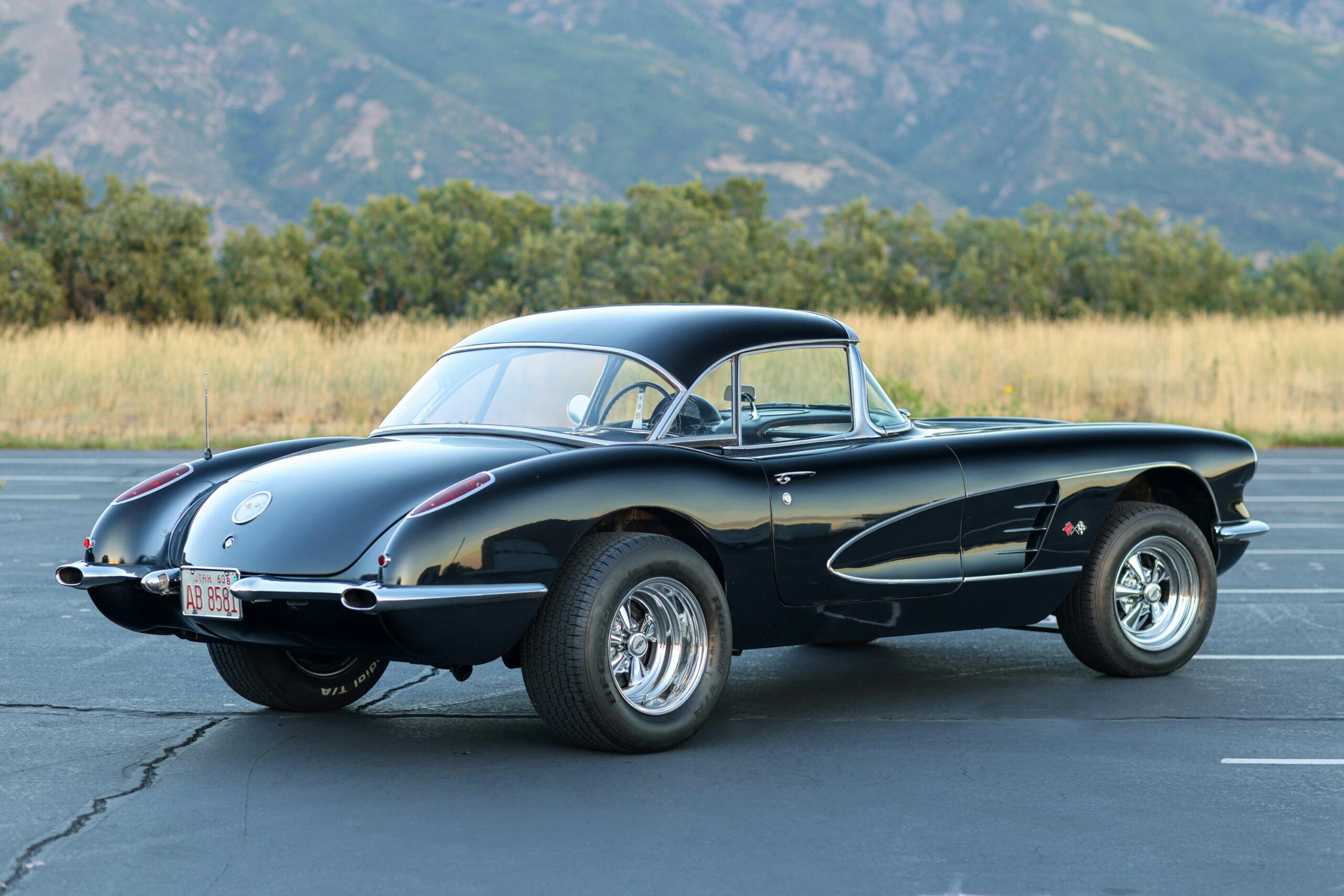
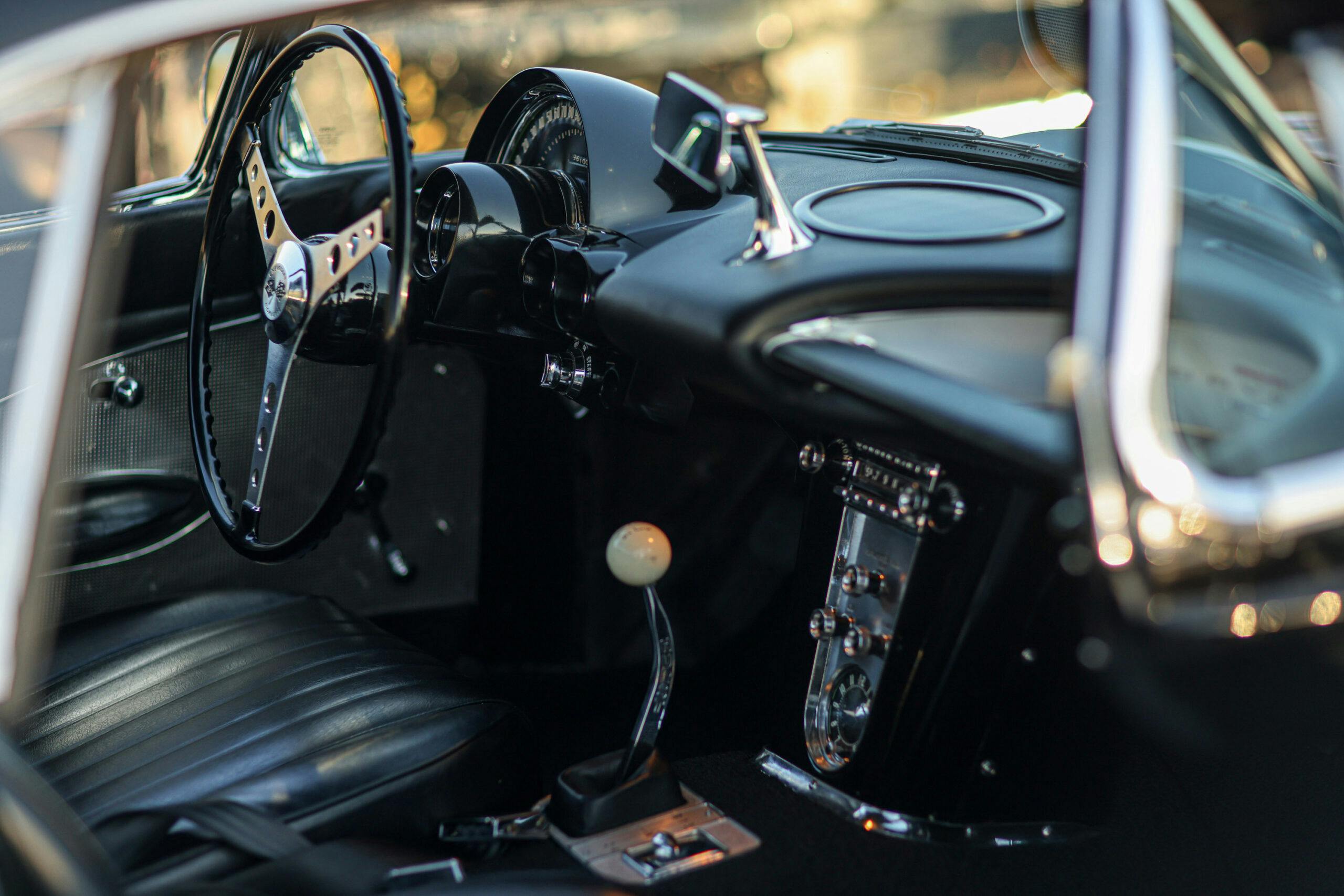
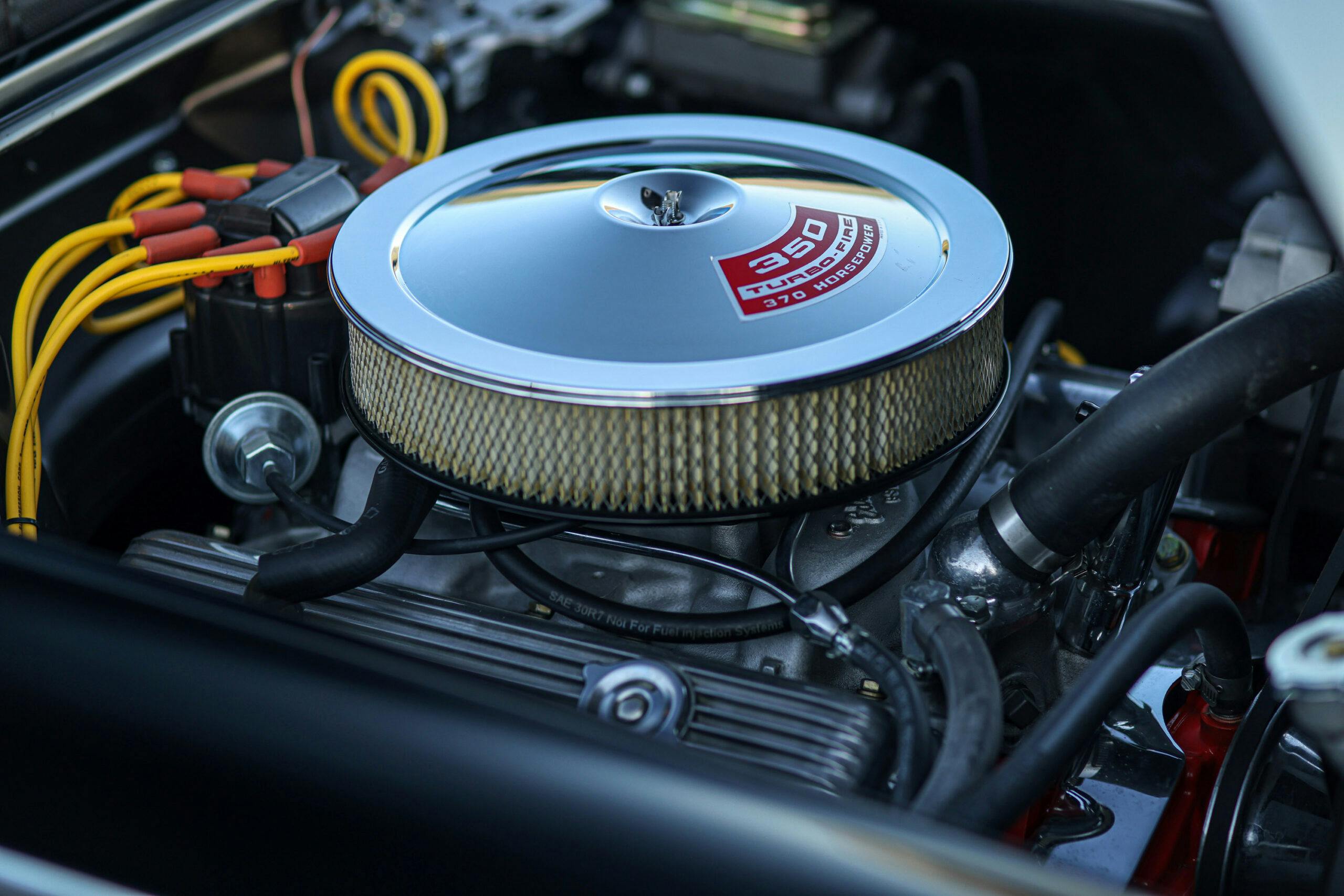

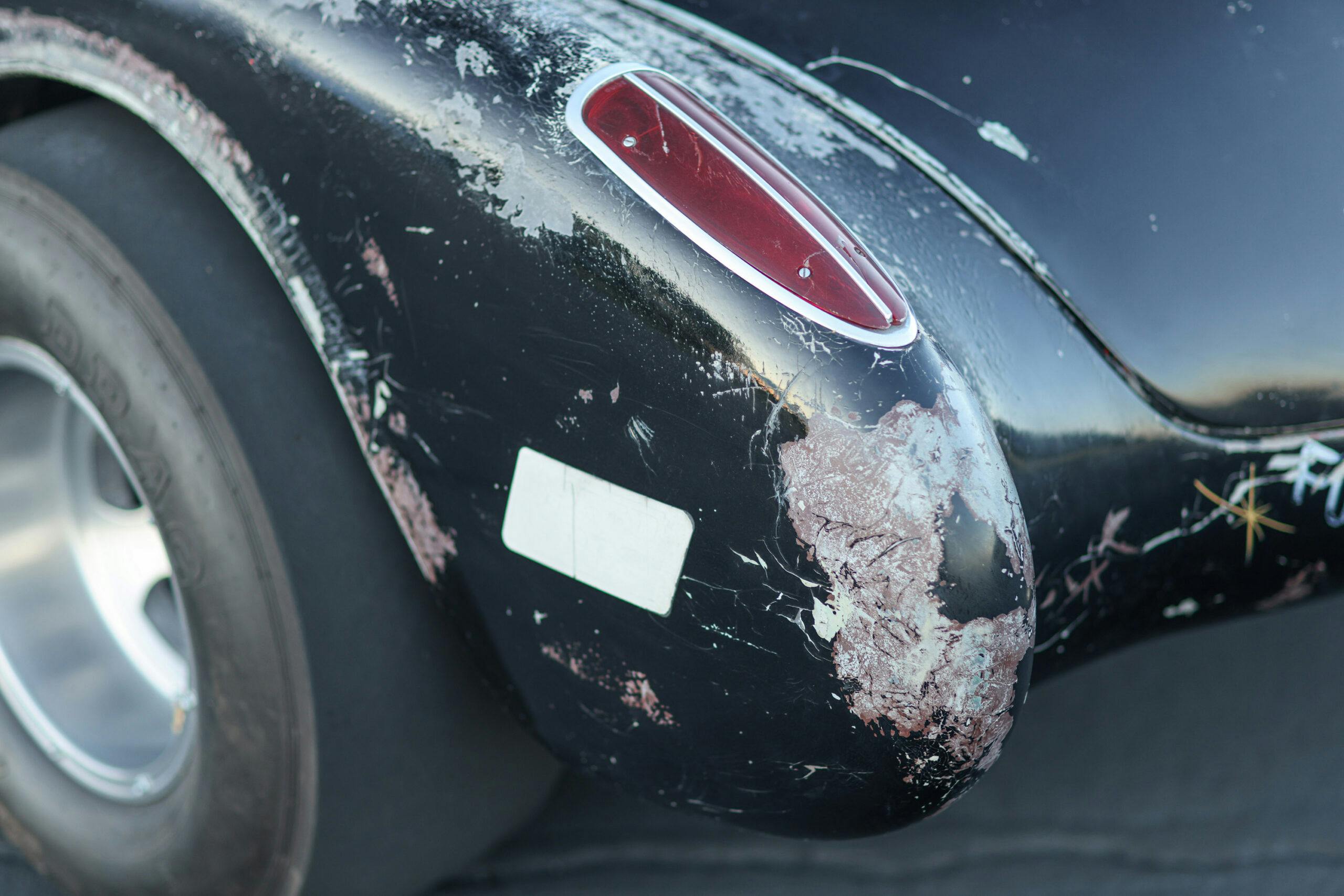

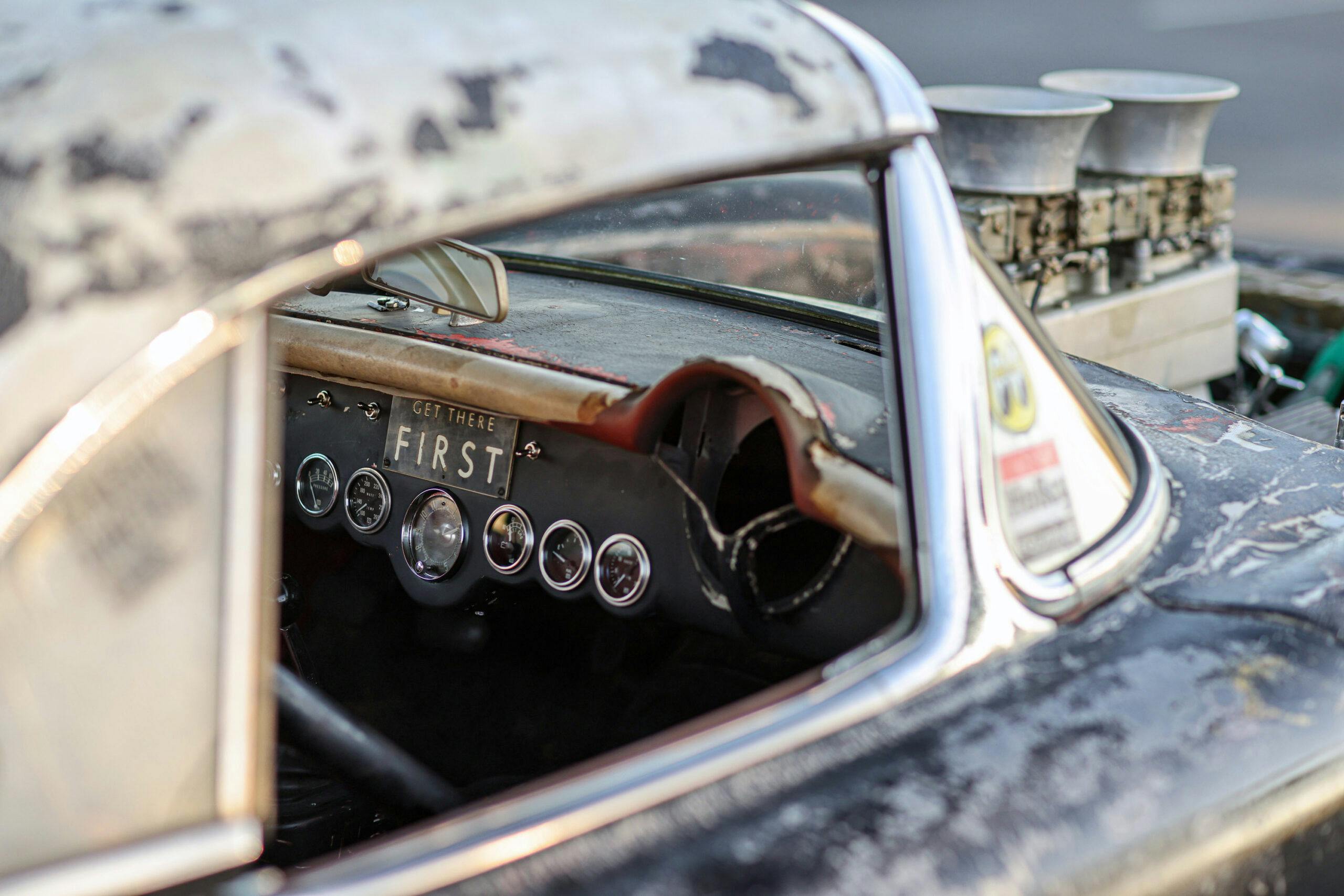
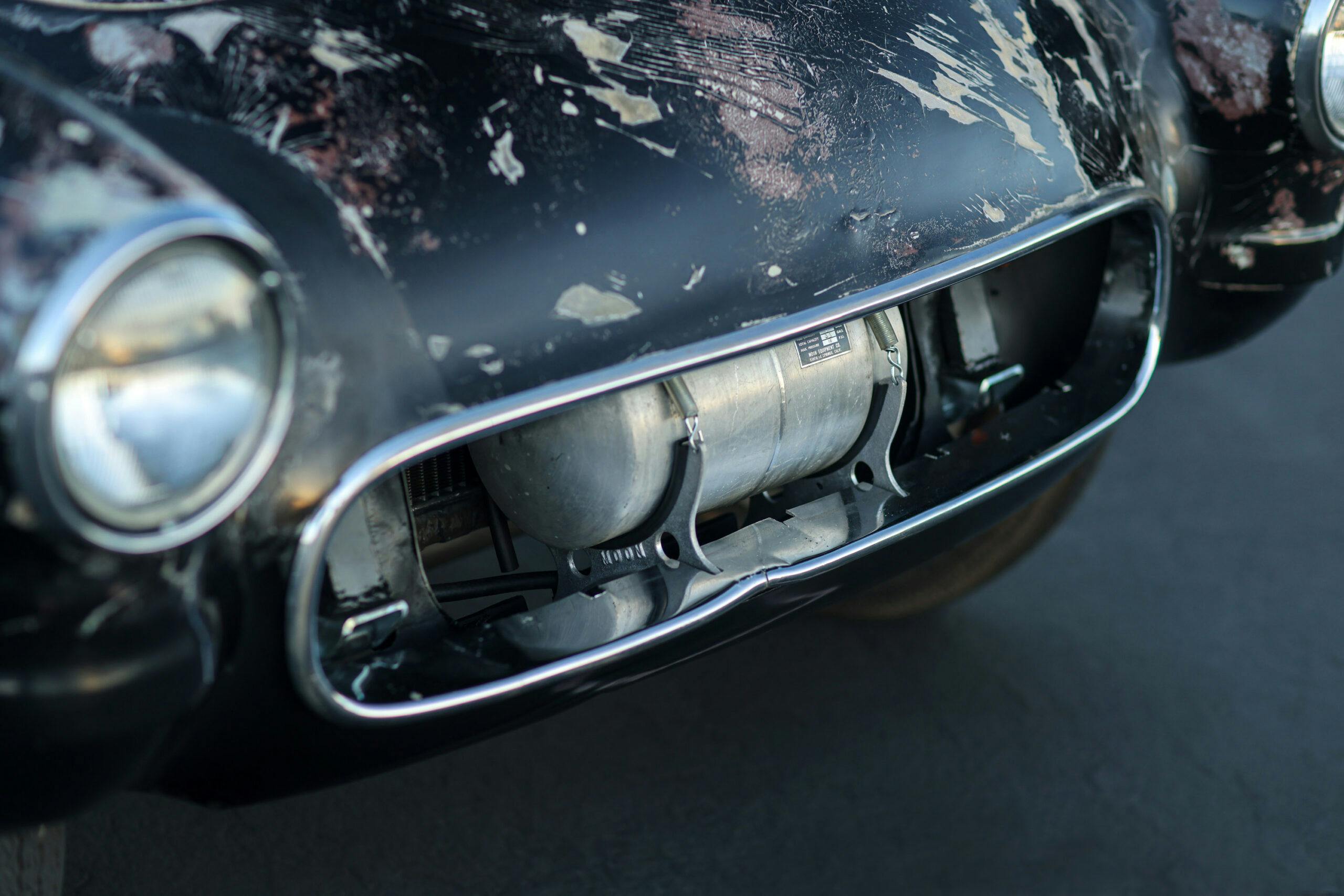
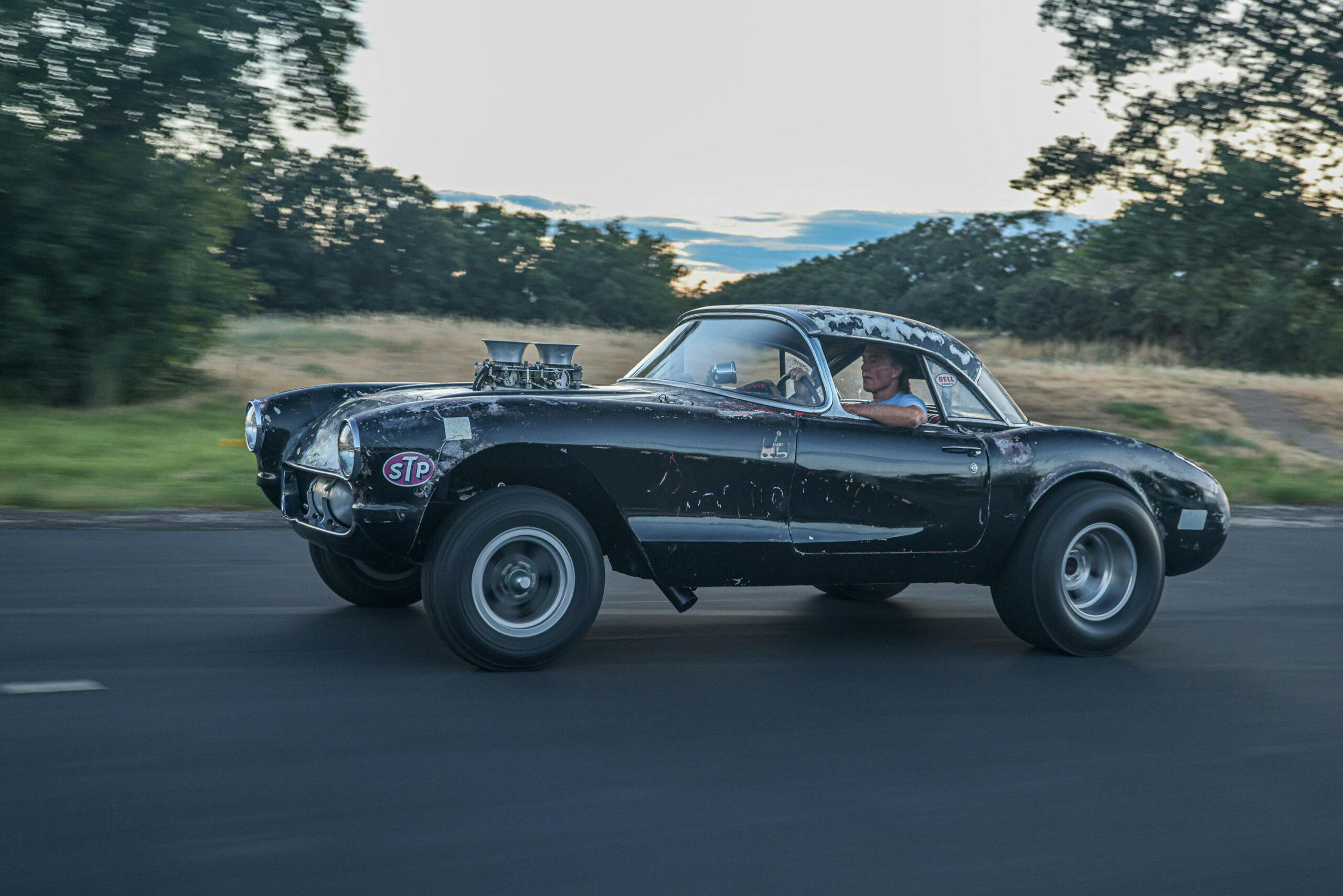
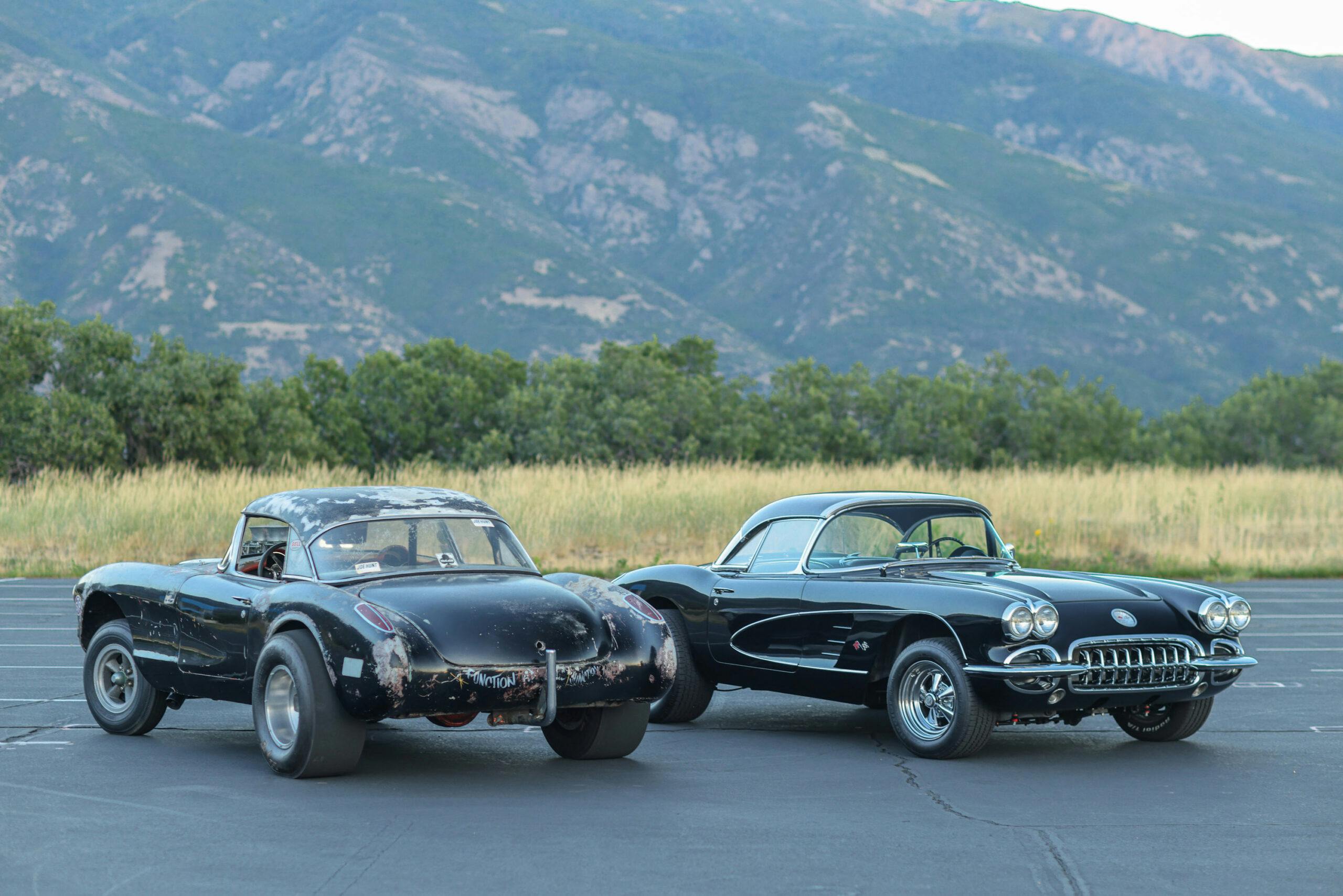
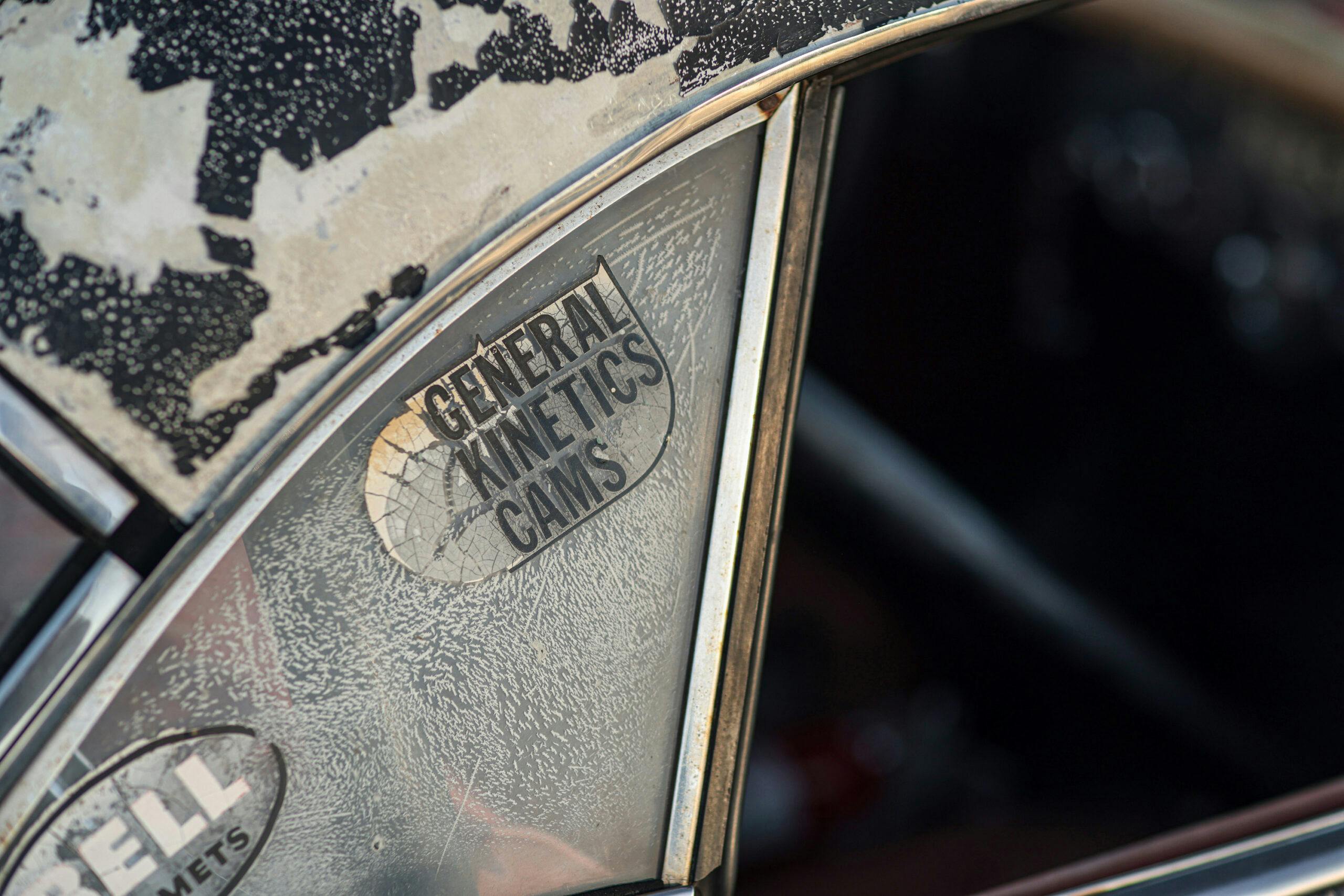
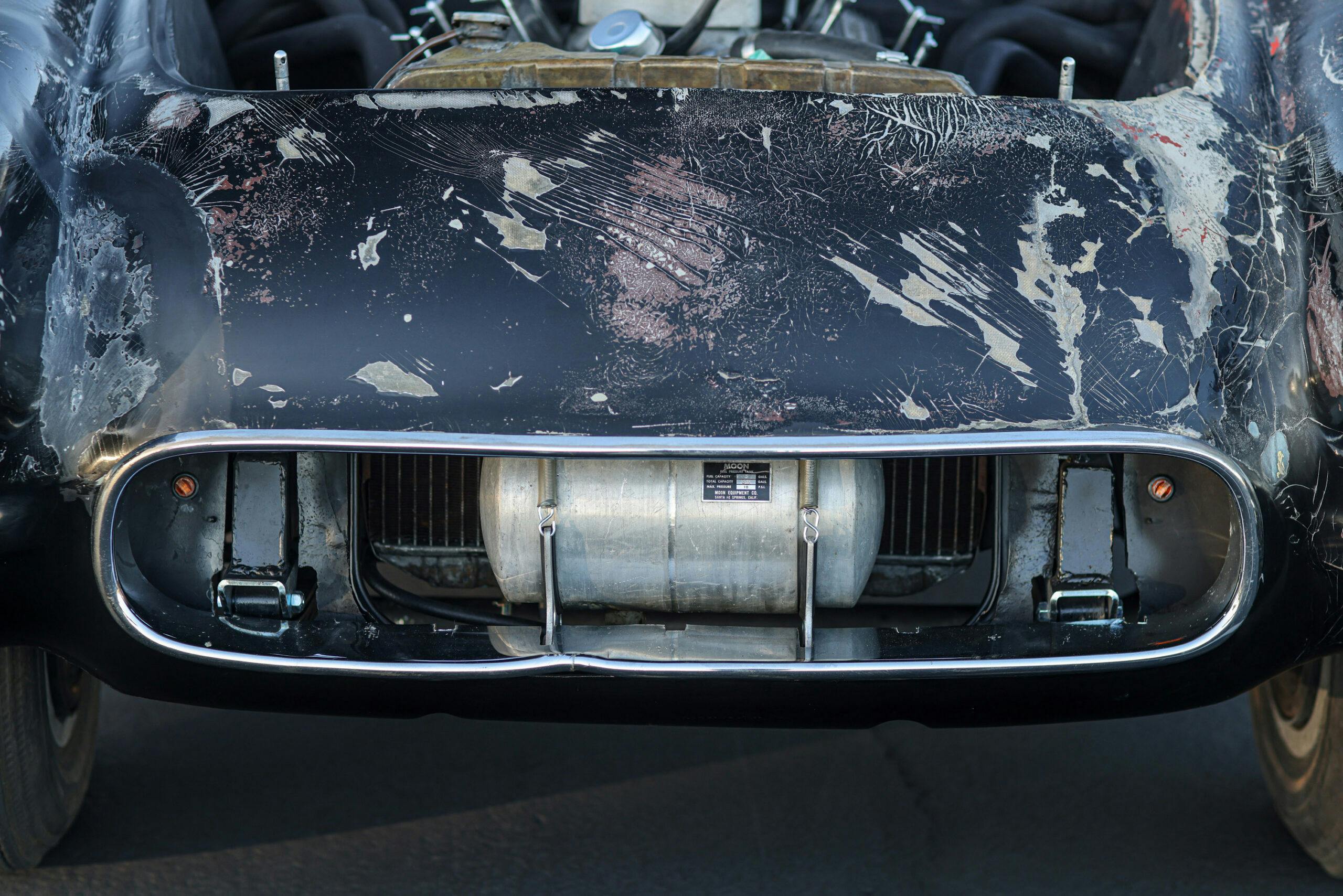
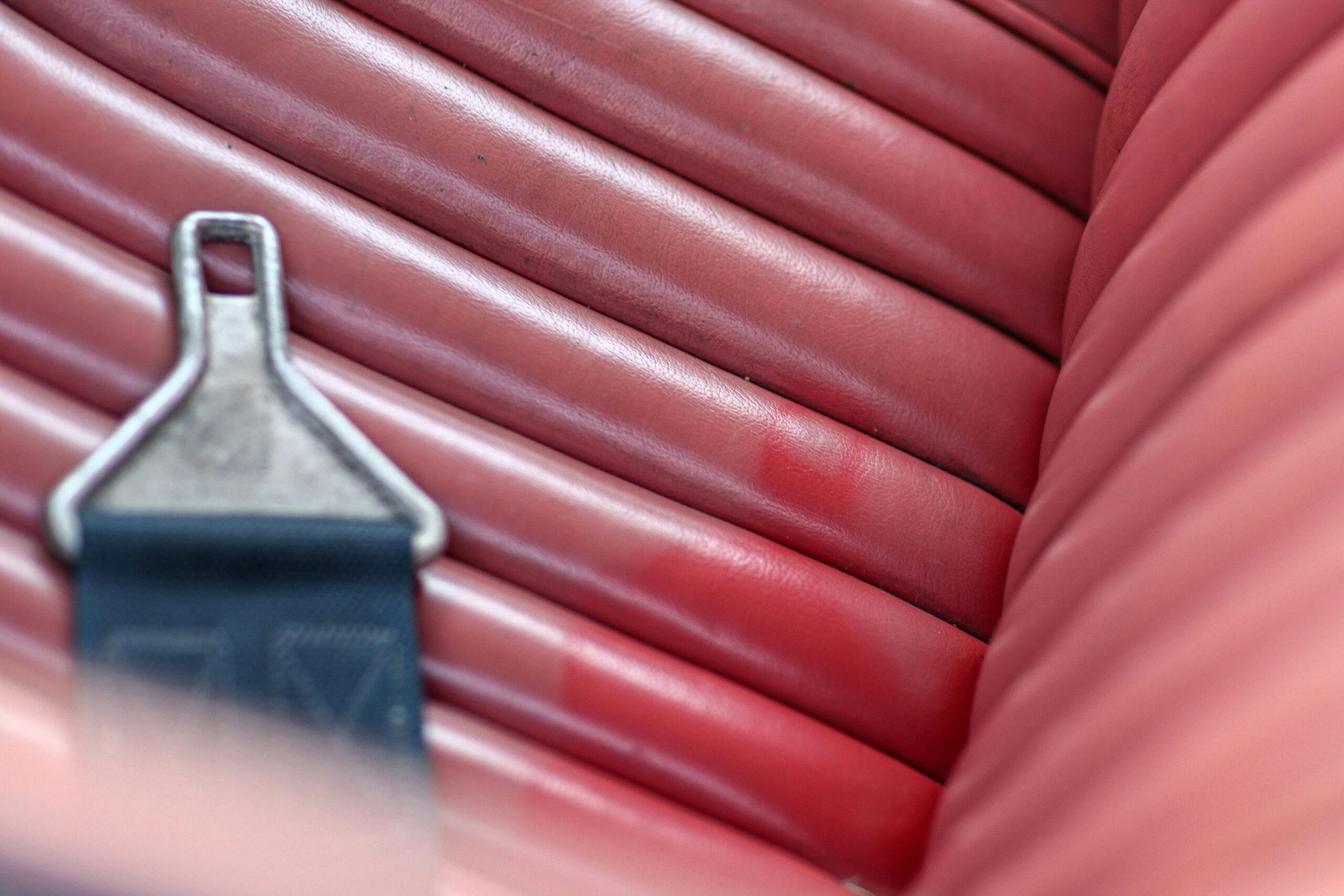
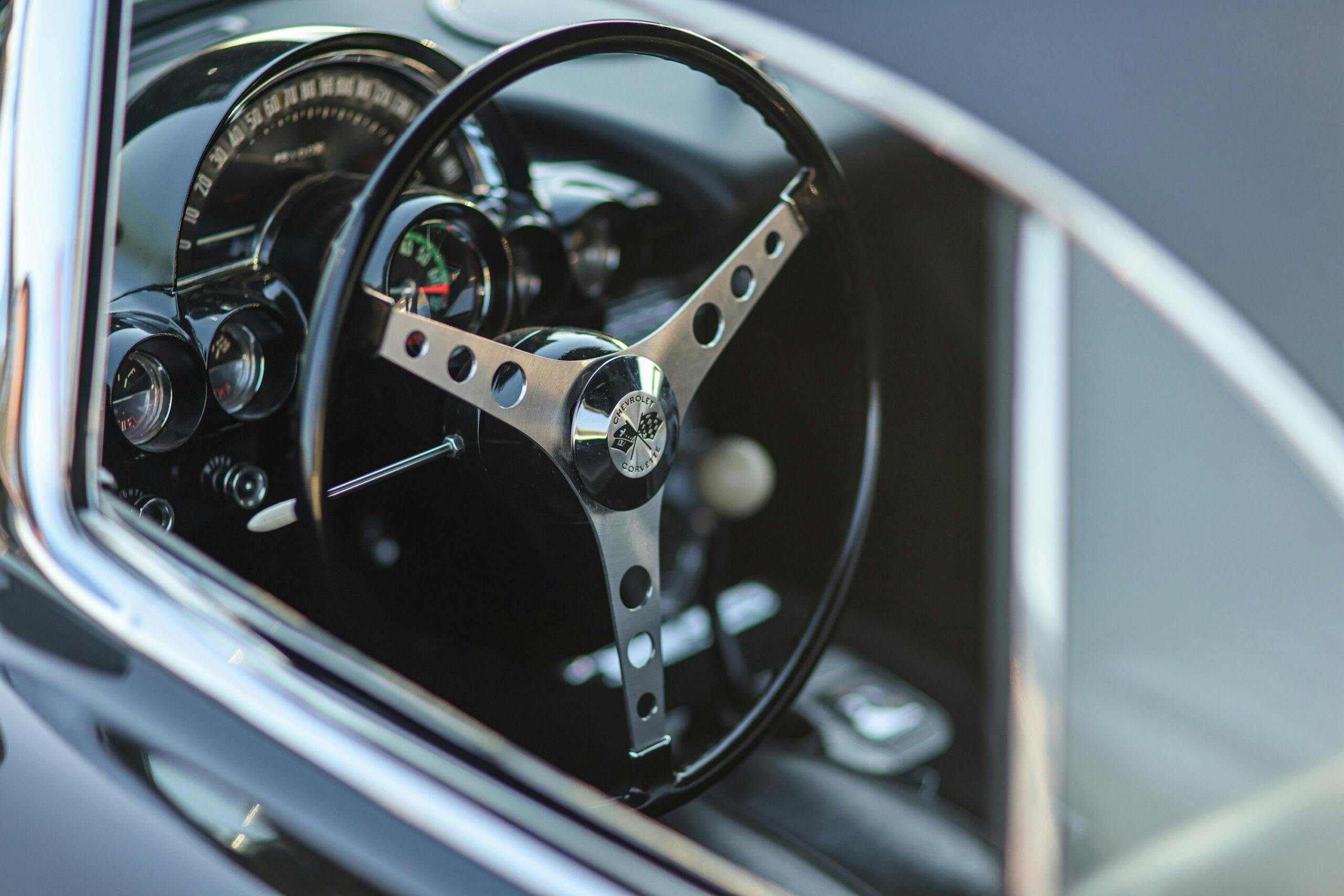
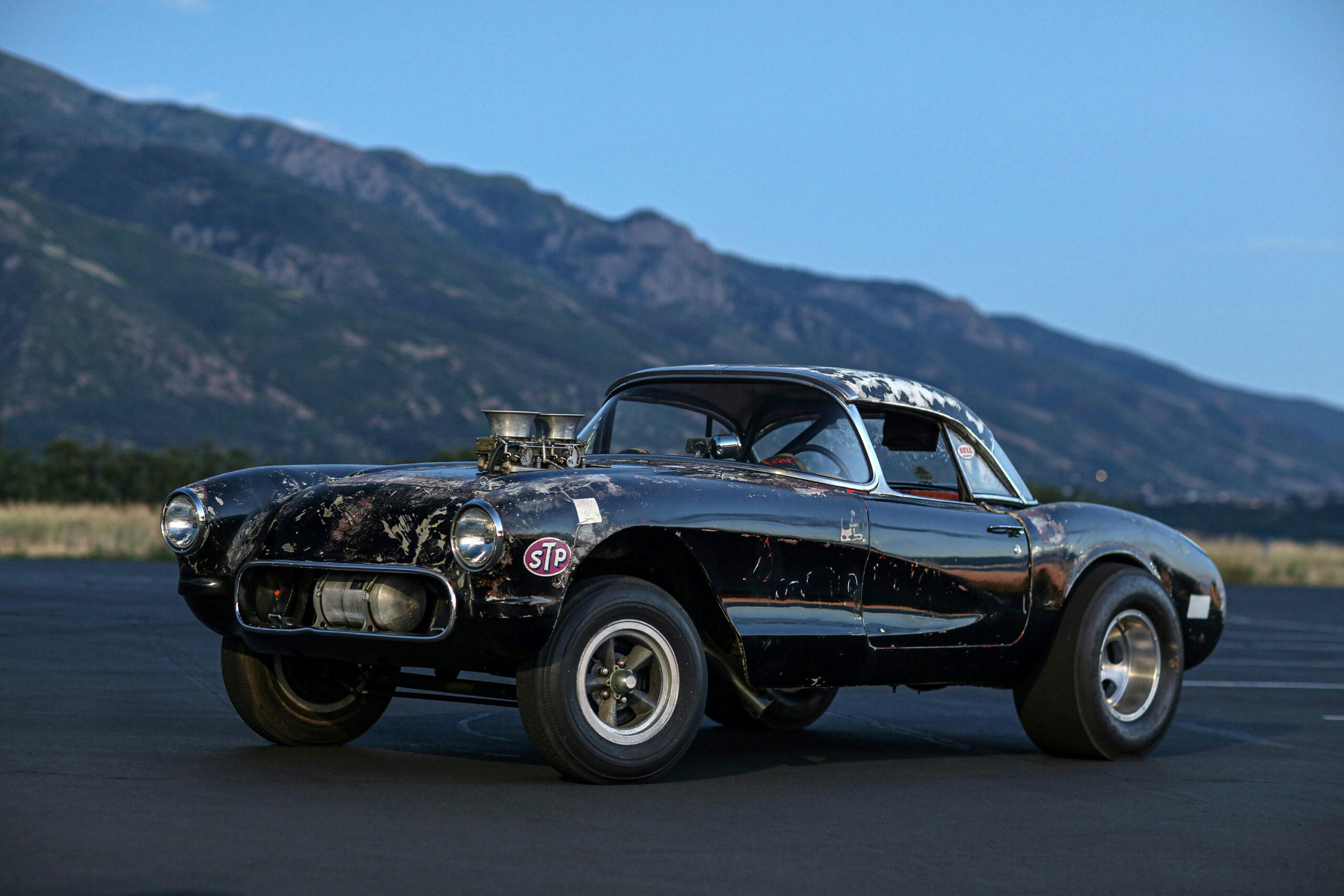


Corvettes from any year have never really done it for me. But this ’56 is awesome.
Thank you! I’m happy that even a non Corvette lover likes it!
Do u knownof this vetted has any kind of Canadian history??
Looks exactly like the one owned by the Beaupre Boys from King City, Ontario.
It was drak green, straight axle running a big block. Wicked back in the 60’s 70’s
R
I haven’t noticed any green on it. Looks like it was red prior to black. No color under the red as far as I can tell
Nice work! Beautiful car… Looks like 1969 when I see the tach and the STP sticker.
Thank you! The STP sticker brought back good memories for me too. It was a real challenge to repair the damage on right fender with out damaging the STP sticker
I see you got 58 corvette or newer taillights and I love that style of taillights the are the best ever taillights for corvette
Straight axle, Tunnel Ram, dual carbs… OH YEAH!!!! That Fabulous! Love it.
That body style and those taillights are my ideal corvette
I wish I did have some historical references for this car – it’s one that I certainly would’ve paid attention to. Mr. Carpenter has done a wonderful job at getting the car streetable yet keeping it looking like a vintage racer!
A bit of a high-end bottom feeder… good for him
🤣🤣🤣
I want to drive that car NOW!!!
I’m not really a huge Corvette guy either, but that thing is COOL!
Am I crazy, or wasn’t there a Hot Wheels car that looked just like this?
I found a listing on eBay for a red/white ’62 gasser with a blower that is very similar. So maybe you aren’t crazy – or at least not completely so… 😁
Love it go daddy go.
Noticed the “Function at the junction” on rear fascia. There used to be a dance club/beer joint in Waynesboro Virginia named “The Junction.” Their radio ads ended with “Come function at the Junction.”
A collision with the right hay bale could totally do the damage … some bales weigh in excess of 2,000 pounds.
I agree. When I read the hay bale comment I thought “you ain’t from the farm, are ya.”
Only thing I can think of, is to go through old Hot Rod magazines of the era. My older brother always had them and I recall as a kid seeing drag race reports along with lots of pix in them.
Perhaps Google Books has them scanned?
So how do you fill “The Moon Tank”
With the hood off, I have to use a long funnel. It only holds 3.5 gallons so it doesn’t go far on a tank of gas! (lol) The original one has long been taken out and the gas lid door has been filled over. I have thought about putting a bigger tank in the trunk and then just have the moon tank go along for the ride but part of me thinks its kinda dumb to have the Moon tank on there if its not really used
How about a larger tank for driving around, and a cable-operated valve for the Moon tank – either as a reserve, or for ‘special’ fuel for ‘special’ occasions?
If I am not mistaken, the car only needs to go a 1/4 mile at a time, preferably as quickly as possible. 3.5 gallons seems adequate. Enjoy!!!!
Thank you for all the nice compliments and for any suggestions that might lead to the back history of this car.
Sweet!
You might ring up Ray at Vintage Engineering. He’s up in the way north of CA now, but he and his dad before him were deep into cars in the Bay Area for decades. https://vintageeng.com
Thanks Charles, I just sent an email to Ray at Vintage Engineering